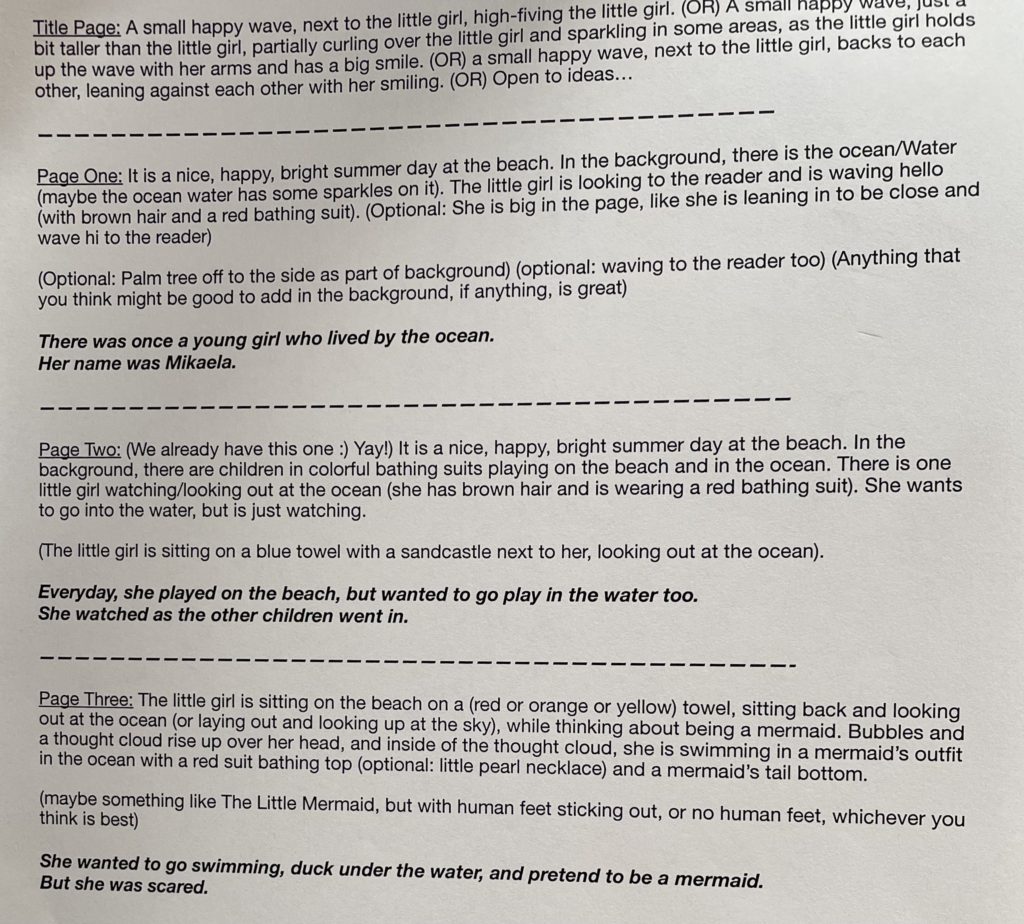So over the last couple of weeks, I wrote about my search to find the right illustrator to bring My Friend, Water to life. I think that when you find the right illustrator, you just know. And I was lucky and blessed to find Natalia! 💕 Over the next few weeks, I will go over the process (from my end) as we worked to arrive at the final illustrations for the book 😊.
To begin with, I had created half of a storyboard with stick figures, which helped me to visualize the scenes and how to split up the text. But after I received Natalia’s sample illustration, I decided to put aside my drawings and put all of the scenes into descriptive text instead. This way, Natalia could exercise creative freedom in the scenes as she imagined them to be, based on my detailed description. Then we have the best of both worlds, because we have creativity from two minds. I also didn’t want her to be boxed in from my perspective, when she clearly had an amazing imagination.
To create each scene with detailed text took me several long days to put together for pages 1-16, and then several more long days for 17-32. I split the two halves up, but in combined total, it took me about six days of 10 hour days. This also included some field trips to my local library and bookstore to see how other authors effectively spread their stories.
It took me a while because as I thought of what each scene should be, I also figured out which text would go on which page, and how to split it up to be about 32 pages (the typical length of a children’s book) so that the story would flow in the smoothest way while highlighting the main lesson. In a sense, this portion was about creating the detailed scenes for the book, but it was also formatting as well.
Accompanied by many cups of teas and coffees, I carefully thought it out and rough sketched on blank pieces of paper as I split up the scenes and text into 32 pages. Then I created a Page document and wrote out each detailed scene by page number, along with the accompanying text in bold for each scene. The key was this: to describe all of the important elements of each scene, and leave the rest up to her awesome imagination so that she could illustrate from her perspective.

I’m really happy to have done it this way, because some of the illustrations turned out similarly to how I had pictured, and some turned differently from what I had pictured, and I was delighted! 😃

So that is how I put together my detailed scenes, an example of what my detailed scenes looked like, and how long it took. For me, creating the initial storyboard with stick figure sketches helped a lot (and I would highly recommend doing that), but omitting my drawings and submitting only my text to her opened up a new world of possibilities! She came up with illustrations from perspectives that I hadn’t even thought about, but it still showed the same scene and told the same story 🙌
Throughout the process, I sketched out only one or two things just to share ideas of placement, but otherwise descriptive text was the majority of the hand-off, and she was able to take what I was thinking and bring it to life in such a beautiful, imaginative, and pleasing way!! 😃💕🙌
Next week, I’ll write about when she sent in her initial sketches based on the descriptions, and what the next part of the process was like (from my end) 😃
See you next week!
Mika
Comments are closed